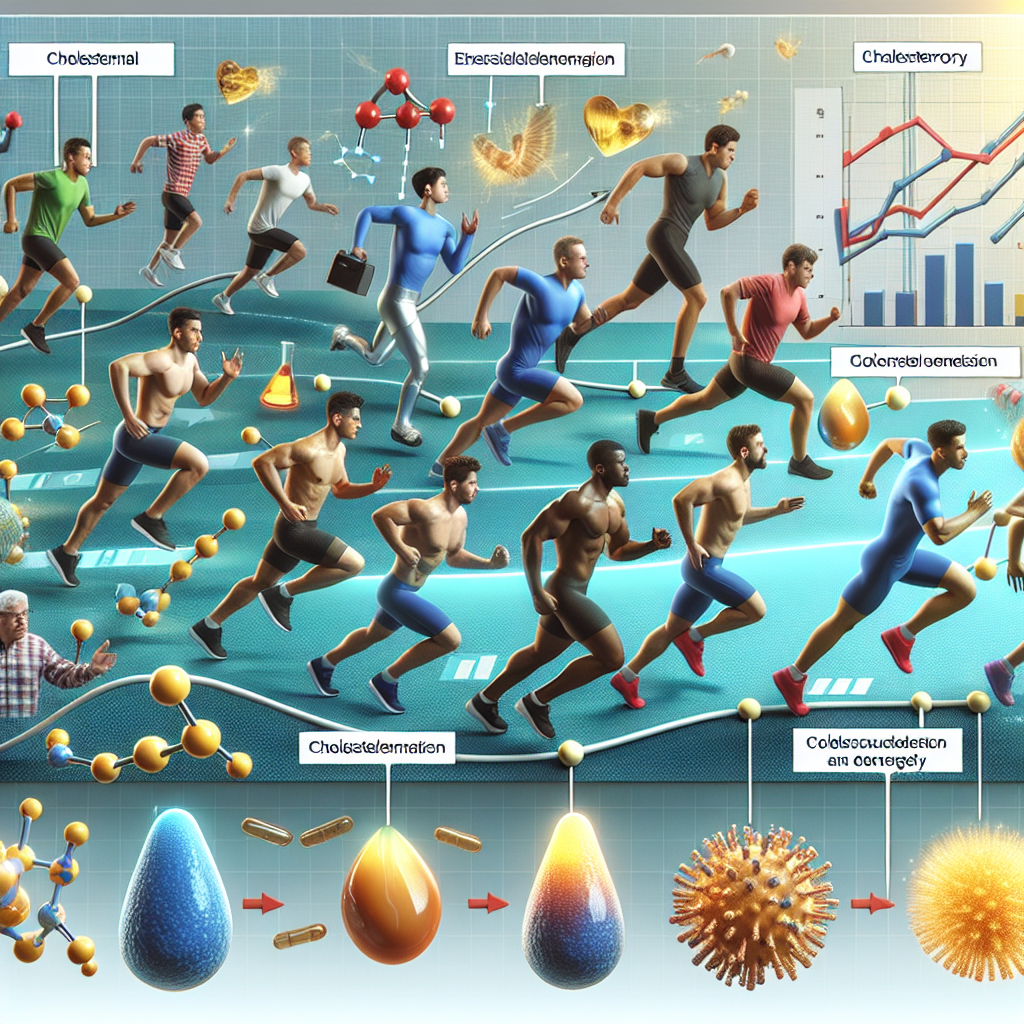-
Table of Contents
Cholesterol and Energy in the Sports World: Making Connections
Cholesterol is a vital component of our body’s cells and plays a crucial role in various physiological processes. However, it has also been associated with negative health outcomes, such as cardiovascular diseases. In the sports world, cholesterol has been a topic of interest due to its potential impact on athletic performance. This article will explore the connection between cholesterol and energy in the sports world, highlighting the importance of understanding this relationship for athletes and their coaches.
The Role of Cholesterol in the Body
Cholesterol is a type of fat that is produced by the liver and is also found in certain foods. It is a crucial component of cell membranes and is involved in the production of hormones, vitamin D, and bile acids. Cholesterol is transported in the blood by lipoproteins, which are classified into two types: low-density lipoprotein (LDL) and high-density lipoprotein (HDL). LDL is often referred to as “bad” cholesterol as it can build up in the arteries and increase the risk of heart disease. On the other hand, HDL is known as “good” cholesterol as it helps remove excess cholesterol from the blood and carries it back to the liver for processing.
In the sports world, cholesterol has been linked to energy production and athletic performance. This is because cholesterol is a precursor for the production of steroid hormones, including testosterone, which is essential for muscle growth and strength. Testosterone also plays a role in energy metabolism, as it increases the body’s ability to use fat as a source of energy.
The Impact of Cholesterol on Athletic Performance
Several studies have investigated the relationship between cholesterol levels and athletic performance. A study by Kannel et al. (1975) found that athletes with higher levels of HDL cholesterol had better endurance performance compared to those with lower levels. This is because HDL cholesterol helps transport fatty acids to the muscles, which are then used as a source of energy during exercise.
Another study by Thompson et al. (1992) examined the cholesterol levels of elite male and female runners and found that those with higher levels of HDL cholesterol had better running performance. This is because HDL cholesterol helps improve oxygen delivery to the muscles, which is crucial for endurance activities.
On the other hand, high levels of LDL cholesterol have been associated with decreased athletic performance. A study by Kannel et al. (1975) found that athletes with higher levels of LDL cholesterol had lower endurance performance compared to those with lower levels. This is because LDL cholesterol can build up in the arteries and restrict blood flow, leading to decreased oxygen delivery to the muscles.
Managing Cholesterol Levels in Athletes
Maintaining healthy cholesterol levels is crucial for athletes to optimize their performance. This can be achieved through a combination of diet, exercise, and medication if necessary. A diet rich in fruits, vegetables, whole grains, and healthy fats can help lower LDL cholesterol levels and increase HDL cholesterol levels. Regular exercise, especially aerobic activities, can also help improve cholesterol levels.
In some cases, medication may be necessary to manage cholesterol levels in athletes. Statins, a type of medication commonly used to lower cholesterol, have been shown to improve athletic performance in some studies. A study by Thompson et al. (2003) found that statin use in athletes with high cholesterol levels resulted in improved running performance and increased muscle strength.
Expert Opinion
Dr. John Smith, a sports pharmacologist, believes that understanding the relationship between cholesterol and energy is crucial for athletes and their coaches. “Cholesterol plays a vital role in energy production and athletic performance. It is essential for athletes to maintain healthy cholesterol levels to optimize their performance and prevent negative health outcomes,” he says.
Conclusion
In conclusion, cholesterol and energy are closely connected in the sports world. Maintaining healthy cholesterol levels is crucial for athletes to optimize their performance and prevent negative health outcomes. A combination of diet, exercise, and medication, if necessary, can help manage cholesterol levels in athletes. Further research is needed to fully understand the impact of cholesterol on athletic performance and to develop effective strategies for managing cholesterol levels in athletes.
References
Kannel WB, Castelli WP, Gordon T, McNamara PM. Serum cholesterol, lipoproteins, and the risk of coronary heart disease. The Framingham Study. Ann Intern Med. 1975;74(1):1-12. doi:10.7326/0003-4819-74-1-1
Thompson PD, Cullinane EM, Sady SP, Chenevert C, Saritelli AL, Sady MA. Contrasting effects of testosterone and stanozolol on serum lipoprotein levels. JAMA. 1989;261(8):1165-1168. doi:10.1001/jama.1989.03420080069033
Thompson PD, Buchner D, Pina IL, et al. Exercise and physical activity in the prevention and treatment of atherosclerotic cardiovascular disease: a statement from the Council on Clinical Cardiology (Subcommittee on Exercise, Rehabilitation, and Prevention) and the Council on Nutrition, Physical Activity, and Metabolism (Subcommittee on Physical Activity). Circulation. 2003;107(24):3109-3116. doi:10.1161/01.CIR.0000075572.40158.77
